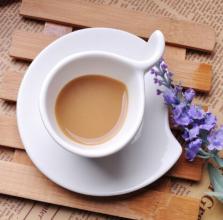Introduction to the producing areas of the flavor and taste characteristics of Indonesian Golden Manning Coffee
Gold mantenin tastes cleaner than Lindong mantenin. Mantenin's original herbal, earthy and woody flavors are almost gone, but caramel is more sweet and fruity is brighter and more elegant. Generally, Lin Dong Mantenin bakes until the second explosion and then comes out of the oven, which can reduce the miscellaneous smell, but the gold Mantenin has a good transparency and sweetness before or after the second explosion, and the baking interpretation space is wider. Lin Dong Mantenin scrapes off the pectin layer before the pod is dry, which is the main reason why Manning fruit has low acidity and high mellowness. After a little drying, the water content of the coffee in the pods is about 18%. Finally, the exporters of Medan come to purchase the undried pods, place them in a large drying farm or dry them by machine until the water content is 12%. It can be seen that Lin Dong Manning's drying process, due to the lack of hard equipment of farmers, adopts a three-stage division of labor among farmers, bean collectors and exporters. Mantenin's unique aroma of herbs and sunwood. Due to high humidity, the pectin layer is dried in three stages. This is also a rare treatment in the world, accidentally creating a low-acid, thick and smelly flavor of Mantenin. Because the three-stage drying method has many variables and the processing method is rough, Manning can be called the most unstable boutique coffee. Chopped beans, moldy beans, black beans and unripe beans are so full of bakers that it takes a lot of time to pick out defective beans before baking, but this does not detract from the world's preference for mellow Manning. In order to improve the problem of high defective beans in Mantenin, the Japanese adopted stricter quality control more than a decade ago. After the dried raw beans were screened by density and color separation, they were finally manually picked out four times to remove the defective beans to produce golden mantenin with dark green color and uniform bean phase.
The two BIWA flavors have their own advantages, and both are among the top beans in Manning, but the price has always been higher than that of "Golden Mandheling" because of the more stringent production process used by Manning.
At this point, the real thing is not over, because there is another kind of Manning that has to be mentioned, that is, the Sumatran tiger. The Sumatran tiger is strictly called 19-mesh specially selected Mantenin. It comes from Nihuta, Siborongborong and Doloksanggul in Lindong, the traditional Mantenin producing area in Indonesia. The particles of more than 19 mesh, which are strictly selected from the large raw beans purchased by small farmers, are assembled to form this 19-mesh special selection product, which has the reputation of "Sumatran tiger". This kind of mantenin is collected from fully ripe fruit, and after three strict hand selection, it can be the best of mantenin. The taste is full-bodied and mellow, with an excellent return to sweet, and the market price even exceeds that of the famous gold Manning.
This Sumatran tiger is also called "Golden Manning" by some merchants in China, causing some confusion. Of course, it is understandable to use "gold" to describe the quality of this bean, but such a translation will cause confusion with "Golden Mandheling". The Japanese have an extreme preference for coffee, for example, the rise and popularity of the Blue Mountains in Jamaica is driven by the Japanese, and Manning is no exception. In order to improve the problem of high defective beans in Mantenin, the Japanese adopted more stringent quality management and screening processes many years ago, so they obtained very high quality and were very popular in Europe and the United States. Japanese trading houses initially called this extremely high-quality Mantenin "Golden Manning".
However, in recent years, PWN took the lead in registering the trademark "Golden Mandheling" in Indonesia. Since then, the Japanese BIWA company has no right to continue to use the name created by them, so it has to register "Gold Top Mandheling" separately (generally known as "Golden Ding Manning" or "Jinding Manning" in China).

Important Notice :
前街咖啡 FrontStreet Coffee has moved to new addredd:
FrontStreet Coffee Address: 315,Donghua East Road,GuangZhou
Tel:020 38364473
- Prev

Introduction of 40% Arabica beans and 60% Robusta beans in different producing areas
The area where Elaraby grows is 600 to 2200 meters above sea level, with a temperature of 15 to 24 C and an annual rainfall of 1200 to 2200 millimeters. From flowering to fruit ripening for about 7 to 9 months, its bean shape is long and has a strong and round wet aroma. The coffee made from Arabica coffee has strong complex flavors such as flowers, fruit, chocolate and caramel. The coffee produced is bitter and sour.
- Next

Introduction to the price characteristics of Ecuadorian coffee beans from Starbucks in South America
Italian espresso Espresso espresso was born in 1946. It was not until around 1986 that espresso was introduced to the world by Starbucks. The most important feature of Espresso coffee is the cohesion of aroma and taste. Bravo's Italian espresso is blended by Bravo's chief blender of coffee beans from a variety of high-quality coffee farms. Bravo Italian Special
Related
- Detailed explanation of Jadeite planting Land in Panamanian Jadeite Manor introduction to the grading system of Jadeite competitive bidding, Red bid, Green bid and Rose Summer
- Story of Coffee planting in Brenka region of Costa Rica Stonehenge Manor anaerobic heavy honey treatment of flavor mouth
- What's on the barrel of Blue Mountain Coffee beans?
- Can American coffee also pull flowers? How to use hot American style to pull out a good-looking pattern?
- Can you make a cold extract with coffee beans? What is the right proportion for cold-extracted coffee formula?
- Indonesian PWN Gold Mandrine Coffee Origin Features Flavor How to Chong? Mandolin coffee is American.
- A brief introduction to the flavor characteristics of Brazilian yellow bourbon coffee beans
- What is the effect of different water quality on the flavor of cold-extracted coffee? What kind of water is best for brewing coffee?
- Why do you think of Rose Summer whenever you mention Panamanian coffee?
- Introduction to the characteristics of authentic blue mountain coffee bean producing areas? What is the CIB Coffee Authority in Jamaica?

